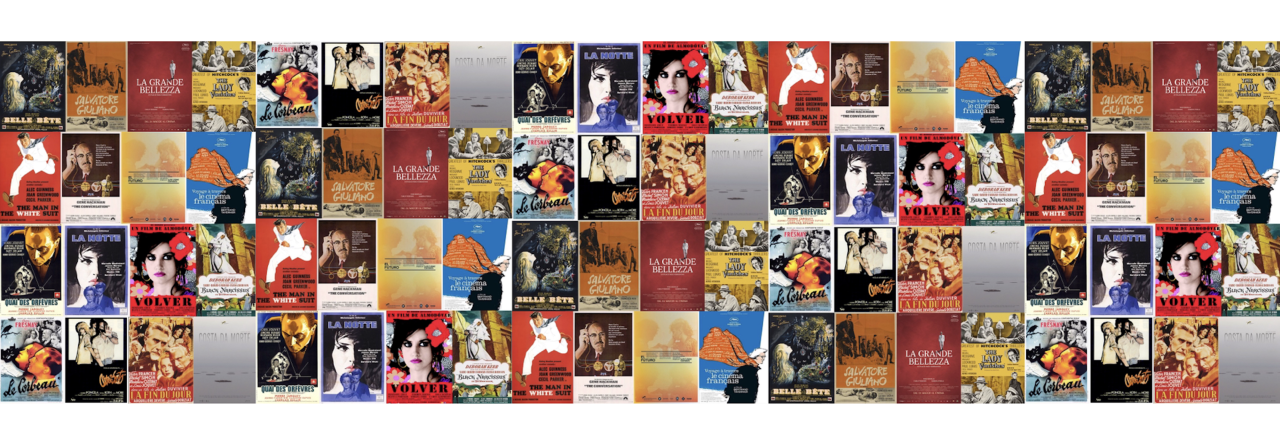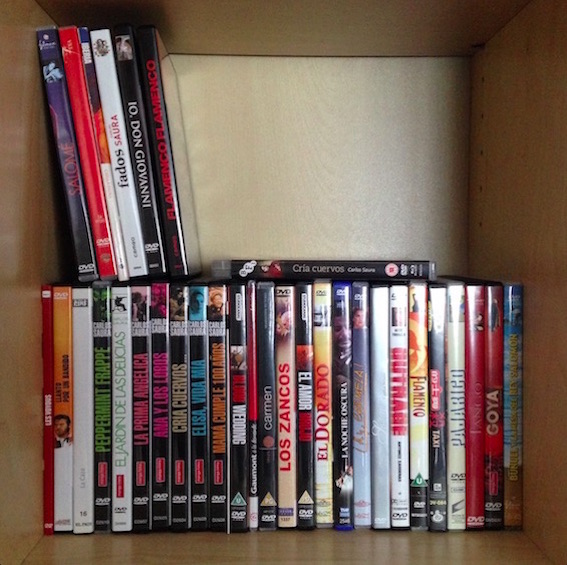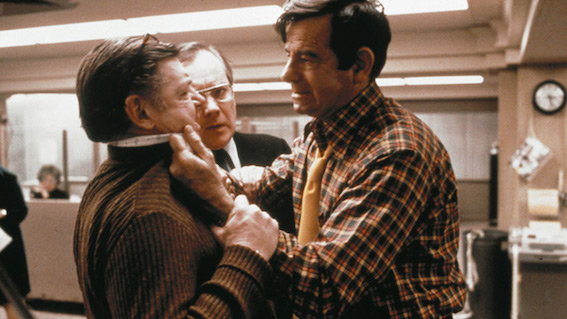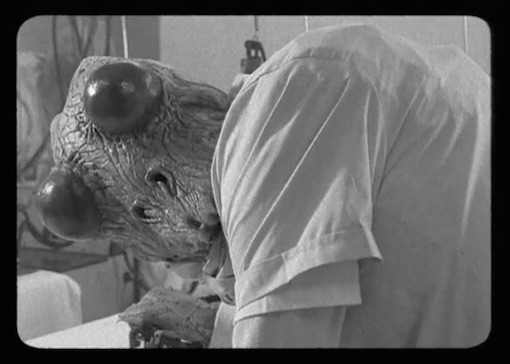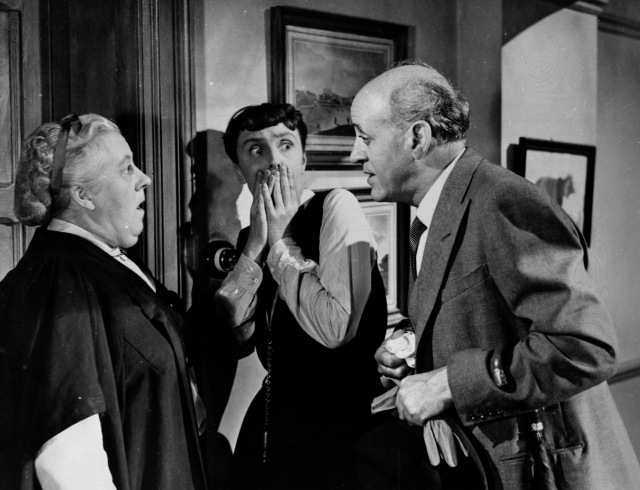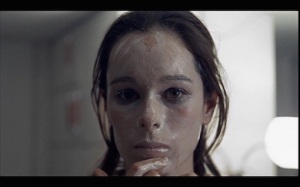
I’ve recently had cause to consider Iván Zulueta’s underground classic on two occasions – someone emailed me to ask whether I had any information on the availability of the film (this is the subtitled version I directed them towards), and I happened to spot that it will be screening in Manchester at ¡Viva! Spanish and Latin American Festival in April as part of their focus on films from the Transition. These two things led me to read over what I’d written about Arrebato on the old blog – it was one of my favourites of the films I wrote about there – and as a result I thought that I’d briefly suspend my break from blogging in order to revisit it here within my Reprint series.
The original post (my 200th on the old blog) was written in December 2014 as my contribution to Shadowplay‘s annual event – The Late Show: Late Movie Blogathon – which focuses on films from the twilight of people’s careers. What follows below is a revised version of that piece. (Update, August 2017: where I’ve reprinted something here, I’ve decided to remove the contents of the original on the old blog and instead leave a link there to the new site (it doesn’t make much sense to have the pieces appear in two places) – however, in this instance, I have left the original to host the clip referred to further below because I have no way of transferring it).

Iván Zulueta’s career as a filmmaker was short – he made only two feature films – but if he is little-known outside of Spain, his influence is nonetheless far-reaching within subsequent generations of Spanish filmmakers. He had spent time in London and New York during the 1960s and 70s, and was strongly influenced by both the Carnaby Street vibe and psychedelia of the former and the underground filmmaking (specifically Warhol) and grubby aesthetic of the latter. His first feature – Un, dos, tres, al escondite inglés (1970) – was a pop musical about a group of music fans attempting to boycott a song contest (one that sounds similar to Eurovision), and is often described as taking inspiration from Richard Lester’s films with The Beatles. He made a multitude of abstract and experimental Super 8 films during the 1960s and 70s: a large proportion of them were either confiscated or lost, but several can be found online (they are all dialogue free – Frank Stein (1972), Masaje (1972), Aquarium (1975), En la ciudad (1976-77), A Malgam A (1976), and Leo es pardo (1976)). From the 1970s onwards he was also a film poster designer for a range of Spanish directors including José Luis Borau (his mentor), Manuel Gutiérrez Aragon, Luis Buñuel (Zulueta’s poster for Viridiana (1961) – a film the Franco regime declared didn’t exist – can be seen on the wall of José’s apartment in Arrebato) and Pedro Almodóvar (including one of my favourites, Entre tinieblas / Dark Habits), and also for the San Sebastián Film Festival (Zulueta’s father had been the Festival Director between 1957 and 1960). Zulueta made two further shorts – some ten years after Arrebato – but when he died in 2009 (at the age of 66), he had spent years in the wilderness in thrall to heroin addiction and a self-imposed exile in San Sebastián (his home city).
Given the emphasis placed on his visual focus by those interviewed in tribute programmes made after his death (almost everyone describes him as incredibly knowledgeable about all aspects of art and design, but someone who never read books), it is perhaps appropriate that my first experience of watching Arrebato was a copy with no subtitles and murky sound (one of El País‘s collection of DVDs): I clung to the images like a life raft.
To summarise the plot: In the present (Madrid in the late 1970s), film director José Sirgado (Eusebio Poncela) returns home to find that his actress ex-girlfriend Ana (Cecilia Roth) – a heroin addict like himself – has returned to his apartment after several weeks of absence. In between arguing with Ana and sliding into a drugged oblivion, José starts listening to a recording – and eventually watching a film – sent by an old acquaintance, Pedro (Will More), a younger man who is obsessed with shooting film. A lot of the film plays out in flashback as the recording causes José to remember his first strange encounter with Pedro, and also their second meeting a year ago (when Ana was also present). In the last section of the film, José goes to Pedro’s apartment to try to solve the mystery contained within the recording and accompanying film.
I can usually get by without subtitles but here I think I would have struggled even with clearer sound because the script is full of gnomic utterances, and More’s delivery is deliberately strange (Pedro’s voice is usually exaggeratedly deep, but rises when he becomes excited or ‘enraptured’ and increasingly childlike) with large parts of the film conveyed via his voiceover. The desire to lose yourself in something (or someone) is a common enough impulse but in Arrebato this ecstasy is tinged with horror, suggesting that both cinema and drugs (the chosen routes into the sublime) are vampiric forces. The film is full of moments of beguiling but unsettling beauty (cinema as enchantment) in conjunction with a building sense of claustrophobia. The latter is generated via the film’s limited locations (José’s apartment during the course of that one night, the country house where he first meets Pedro, or the bedroom of Pedro’s Madrid apartment), the action frequently taking place in the shadows (faces usually illuminated by the flickering lights of projectors), and aurally through certain repetitive elements on the soundtrack (a recurring theme features the sound of children’s toys in an uneasy lullaby, but there’s also the insistent clicking of the timer on Pedro’s camera).
The film’s title refers to a state of being that the central trio – or at least the two men – are seeking. As Pedro explains it, what they are pursuing is that sense of being enraptured in something that we have as a child, when we could spend hours focussed on one thing and in our own little world. That an object is involved is important because for Pedro this state relies upon the act of looking, but all three of them also use drugs as their gateway into rapture. Zulueta described these symbolic items as “an object that condenses a whole series of things that have shaped you” [I’m assuming that this quote comes from one of the documentaries on the subtitled DVD – I didn’t note the source in the original post]. Pedro tests the (rare) people he meets by trying to find a) their special object, and b) how susceptible they are to being enraptured.



José’s object is an album of collectible stickers depicting scenes from King Solomon’s Mines (Compton Bennett and Andrew Marton, 1950) (from Zulueta’s own childhood collection), for Ana it is a Betty Boop doll, but for Pedro it is (or will be) his own Super 8 films. His sharing of his film collection during José’s first visit becomes a performance of grimaces and pained squeals as he hasn’t managed to capture the precise (but ephemeral) thing he is after. By José’s second visit – between which times José has sent the younger man a timer for his camera so that he can record his time-lapse images with more precision – Pedro has accomplished his filmmaking intentions as far as he can at home, and in the aftermath of the visit will set out into the world to capture new images. Much like José and Ana he will slide into a world of sex and drugs (the latter eventually curtailing the former), but Pedro’s dissatisfaction with those experiences leads him back into his cinematic obsession with an even greater intensity. At the point at which he sends the recording and film to José, he has come to believe that his Super 8 camera has taken on a life of its own, and is vampirically taking his life force from him while simultaneously allowing him to reach an ever-heightened state of rapture.
Even during my somewhat incomprehensible first viewing, the charisma and chemistry of the central trio was plain to see. Eusebio Poncela – already associated with nonconformist roles at this point – was the most experienced of the three, with a certain amount of blurring between life and art given his participation in the movida (a cultural phenomena in post-dictatorship Madrid; some of its key figures, including Zulueta, appear in Pedro’s Super 8 film of a party). Despite José’s uncertain disintegration (the vampire film he has just directed is turning into a disaster, his relationship with Ana is mutually-destructive, and he’s in a downward spiral with drugs), Poncela’s stillness is the calm centre around which the more volatile other two circulate. In the reunion documentary (included on the subtitled DVD – filmed in 1998 and therefore doesn’t feature Zulueta, who was in self-exile at that point) both Poncela and Will More state that their character is Zulueta’s alter-ego – more likely the two represent different aspects of the director. More was also part of the same social crowd and had appeared in one of Zulueta’s Super 8 short films; the role of Pedro was written specifically for him. By turns childlike and sinister, More’s performance is unsettling with deliberately exaggerated vocal tics and gestures, and a breathily insinuating style of delivery on the recording. More so than José or Ana, Pedro is someone on the margins by inclination rather than social circumstances (in terms of class and money he seems comfortably off, and unlike the other two he doesn’t work). Arrebato would be More’s only significant role – he accompanied Zulueta into heroin addiction and cuts a ravaged figure in recent footage.

Although the film is undoubtedly ‘about’ the men, Cecilia Roth is nonetheless equally memorable in what was her first substantial film role. She says during the reunion documentary that as the youngest member of the team (she was 23 at the time of filming, whereas her co-stars and director were in their 30s) she was worried about playing a character older than herself – a woman “with a past” as she describes it, whereas she feels that Arrebato was “the beginning of my own past”. Roth (like Poncela) obviously went on to significant roles with Almodóvar, but arguably she has never been as incandescent as she is in the sequence in Arrebato where she dresses as Betty Boop and sings along to the record player. It is an overt and conscious performance by Ana – she stands in front of the projector screen, with the light of the projector acting as a spotlight – and an attempt to win José back (although undercut, as I noticed on my second viewing, by the fact that the song she sings is the one that plays in the scene where he introduces her to heroin). She is so alive that she jolts the camera into movement – in the only travelling shot of the film, and possessing a dynamism that is otherwise only seen in Pedro’s films, the camera follows her as she dances towards José (the original post has a clip of the sequence at this point – I no longer have the file and haven’t been able to replicate it because VLC isn’t working for me). It’s a genuine ‘a star is born’ kind of sequence, in someways at odds with the rest of the film but perhaps all the more effective for that.

Arrebato‘s reputation as a film maudit was established from the outset. It was turned down by both Berlin and Cannes on the basis of its pro-drugs attitude (although that is arguably a matter of perception given that those onscreen are devoured by their addictions) and it had a limited release in Spain, sinking more or less without a trace. In the documentary Iván Z (Andrés Duque, 2003)* – a series of conversations with Zulueta, who by then was on methadone and attempting to reenter the film business (without success) – he says that he was burnt out after Arrebato but had known while he was making it that it would likely be his only chance. He is animated when discussing cinema (and his admiration for David Lynch) and very candid about his addictions, but falters when talking about his then-current situation (he was back living with his mother in the house he was born in and likens it to The Exterminating Angel (Luis Buñuel, 1962) – the sensation of being stuck in the same place but not knowing how to get out). A sense of loss accumulates in the recurring assertions of his former colleagues that he was a genuinely exceptional talent, and a unique figure in Spanish cinema, who could have had an international career.
The influence of his second feature film however has had a far greater reach than one might suppose for a film that never had a proper theatrical release (and belies the ‘cult’ label that is often attached to it). Pedro Almodóvar is the most obvious (and possibly facile) example. He was a near contemporary (his voice appears in Arrebato – he dubbed Helena Fernán Gómez) and his 1980s films share certain aspects of Zulueta’s aesthetic style (and indeed most of Arrebato‘s cast). But there’s a freshness to Arrebato that survives, and its influence lives on more than thirty years later. My first viewing of the film was just a couple of weeks before I saw El Futuro (Luis López Carrasco, 2013) at the Bradford International Film Festival in April 2014, and it’s a clear point of reference for the latter (confirmed by the director in this interview).


Arguably Arrebato‘s current reputation within Spain means that it is now part of the acknowledged pantheon of Spanish cinema; in 2016, when the film magazine Caimán cuadernos de cine surveyed 350 film writers (critics, journalists, festival programmers, film historians, academics – no filmmakers were asked) to create a top 100 Spanish films, Arrebato occupied 5th place (ahead of it were Viridiana (Luis Buñuel, 1961), El espíritu de la colmena / The Spirit of the Beehive (Víctor Erice, 1973), El verdugo / The Executioner (Luis García Berlanga, 1963), and Plácido (Luis García Berlanga, 1961)). Writing in 2002, and arguing that the film deserved better than to be fetishised with the label ‘cult’, critic Ángel Fernández-Santos summarised Zulueta’s film thus:
Arrebato is a dark instance of pessimism. It is intricate cinema, unfathomable at some points of its crooked and tumultuous journey. And it is, above all, cinema in a raw state, disturbing, painful and great, that situates us with rare elegance in front of a vigorous and devastating image of the dissolution of conscience and the search for death. The film was conceived and built – in a long and bumpy creative process – by a complex and refined filmmaker, a one-off, gifted as few are to perceive and express feelings of desolation and despair. [my translation – the original is here]
So not exactly a laugh riot, and it won’t be everyone’s cup of tea. But it stayed with me for the seven months between my first viewing and when I tracked down a subtitled version in order to write about it for Shadowplay’s blogathon (the fact that I kept thinking about it was part of the reason I decided to write about it in that context). My second viewing – with the luxury of subtitles to clarify some things (but not everything) – elevated it further in my consideration, and underlined the sense that Zulueta’s subsequent disappearance was a loss for cinema. Arrebato is a haunting film, one that gets under your skin. If you get the opportunity to see it, whether on DVD or at a festival screening, take it.
* Iván Z is also included on the subtitled DVD, but can be found on YouTube with subtitles – I particularly recommend it because aside from showing Zulueta talking lucidly about himself, rather than his being filtered through other people, it also features examples of his paintings, illustrations and film posters (some of them are stunning).
